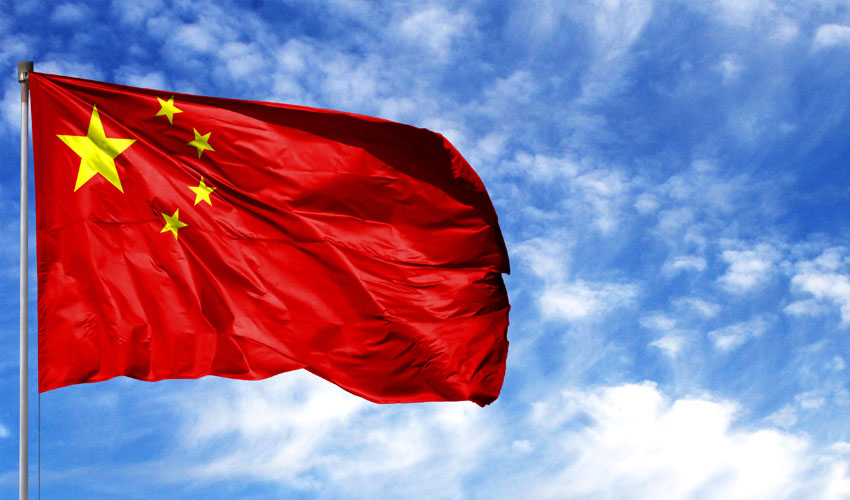In a brazenly hegemonic stand China refused to respect The Hague tribunal’s ruling that China’s sovereignty claims in South China Sea had no legal basis.
China’s foray into the controversial and disputed South China Sea is not a new phenomenon. It is part of Beijing’s long term strategy to bring a large area of land and sea into its sphere of influence. This is being done by China mainly to harness resources exclusively. More recently, China’s firing of medium range missiles into the South China Sea is a growing assertion, largely to reflect its sovereignty over disputed waters. Such action by China has attempted to demonstrate its strategic dominance and sovereignty over the whole of South China Sea.
China has also been engaging itself in military exercises over its territorial claims in the South China Sea. The growing frequency of exercises and the new types of capabilities displayed has demonstrated the progress China has achieved in its continuing military modernisation programme.
Initially, under the guise of “peaceful rise of China” Beijing could project its forays as cooperative engagement with countries in the periphery. Even the US, especially under the Obama administration gave the benefit of doubt to Xi Jinping. The US also advocated a UN intervention and a peaceful resolution to maritime disputes in the area claimed as “South China Sea”, although other countries contested the new name.
The Donald Trump administration took a strong view of the situation and began to deviate from the earlier stand, rejecting China’s maritime claims in South China Sea. As expected, this resulted in the escalation of hostilities between two competing world powers. In response to China’s recent action, the US military has stepped up operations in the area including the deployment of two aircraft carriers in the waters China claims.
US Secretary of State Mike Pompeo highlighted the “unprecedented threat that the allies of US in the region face” from People’s Republic of China (PRC) and described China’s claims in SCS as “completely unlawful”. Elaborating US’ policy further, Pompeo went on to say that China could not lawfully claim waters around the Scarborough Reef and the Spratly Islands, which an international tribunal in 2016 found to be part of the Philippines’ exclusive economic zone. The US also rejected the Chinese claim to waters surrounding Vanguard Bank off the coast of Vietnam, Luconia Shoals off Malaysia, waters in Brunei’s exclusive economic zone, and Natuna Besar off Indonesia. Washington has also not recognised Beijing’s claims to James Shoal, an entirely submerged area just 50 nautical miles from Malaysia but nearly 1,000 nautical miles from China’s coast.
In a brazenly hegemonic stand China refused to respect The Hague tribunal’s ruling that China’s sovereignty claims in the SCS had no legal basis. China does not have any regard for international legal principles. There was a tribunal formed in 2016 to hear a case brought by the Philippines ruled that any claims to historic rights in the SCS implied by the nine-dash line on Chinese maps was invalid.
Close on the heels of the trade war, the US began supporting the idea of “free and open” SCS, respecting the rights of all the rim countries regardless of their geographic size and economic clout. In addition to their views, the White House also emphasised its resolve to initiate all possible and necessary actions to counter Chinese bullying. This required the US to openly align itself with Malaysia, the Philippines, Brunei and Vietnam, which it did.
The US State Department went one step further and imposed restrictions on individuals, companies and officials who were found to be responsible in taking decisions and implementing them with regard to large-scale reclamation and construction, including militarisation of specific zones in SCS in blatant violation of international laws. China was clearly violating all norms of maritime regulations and usurping common resources. The State Department also imposed severe visa restrictions on as many as 24 PRC state-owned companies and subsidiaries of China Communications Construction Company (CCCC).
Even as the US increased its naval presence in the disputed SCS, India added its naval strength to the US force to ensure freedom of navigation. In a swift move, the Indian Navy stationed its warships in SCS and maintained constant contact with US warships through secure systems, which the Chinese side objected to during the talks to resolve the Galwan standoff. In addition to this, India also deployed its Navy along the Malacca Straits near the Andaman and Nicobar Islands and other entry points through which the Chinese commercial vessels and oil tankers enter the Indian Ocean Region (IOR).
New Delhi’s strategic move in assisting the US Navy in SCS, increasing surveillance in IOR and keeping a check on Chinese movement in India’s periphery has earned dividends. New Delhi has maintained its strategic autonomy and at the same time effectively created a firewall to restrict Chinese access into areas of India’s strategic influence.
Needless to say, New Delhi will have to do much more than merely increase its naval presence. There is an urgent need to reach out to countries in SCS, South Asia and IOR so as to ensure the freedom of navigation, regional security and above all increase trade and commerce in a cooperative spirit. China will need to decrease its growing physical presence and power projection in the SCS. Otherwise, China’s action will accentuate instability in the region. It must be emphasised here that while the rest of the world is busy in dealing with the pandemic, China has been engaging in creating its influence across the region. China’s action will have negative ramifications in the disputed waters which might make the SCS an imminent flashpoint.
Arvind Kumar is Professor of Geopolitics and International Relations at Manipal Academy of Higher Education (MAHE), Manipal. Seshadri Chari is a well known political commentator and strategic Analyst.

